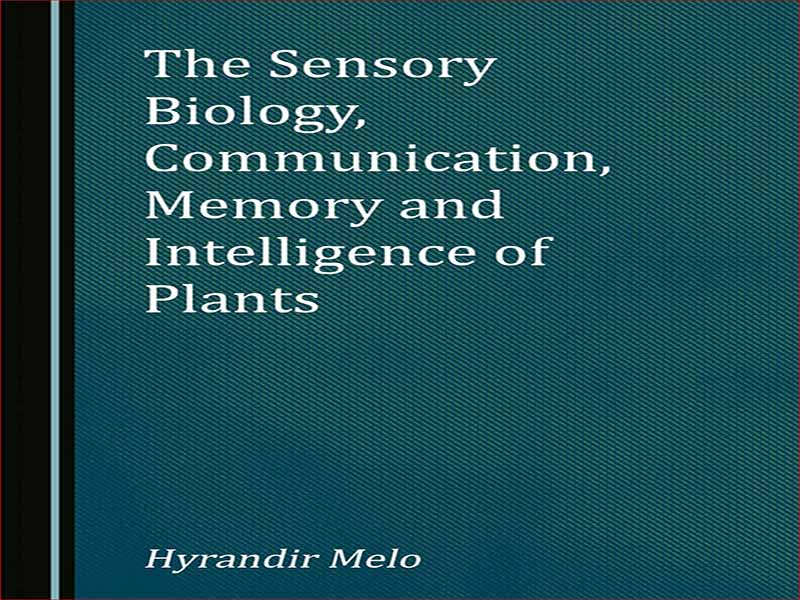- عنوان کتاب: The Sensory Biology, Communication, Memory and Intelligence of Plants
- نویسنده: Hyrandir Melo
- سال انتشار: 2022
- حوزه: زیست شناسی حسی
- تعداد صفحه: 294
- زبان اصلی: انگلیسی
- نوع فایل: pdf
- حجم فایل: 11.9 مگابایت
این کتاب به بررسی توانایی های شناختی در گیاهان می پردازد. اگرچه به طور اسمی موضوعی است که فقط در دو دهه اخیر به طور مداوم به آن پرداخته شده است، علم در واقع برخی از مبانی مفهومی آن را برای مدت طولانی مورد بررسی قرار داده است، مانند مطالعات مربوط به درک و مهارت های ارتباطی گیاهان. در شرایط آنها به عنوان موجوداتی بدون ساختار فرماندهی مرکزی، چنین رویکردهایی لزوماً بر ظرفیتهای سلولی کلی و فردی متمرکز هستند و از استعاره یا تشبیه با موجودات زنده مجهز به سیستم عصبی و مغز متعارف اجتناب میکنند. هدف این است که خواندن این اثر باید به از بین بردن این ایده رایج کمک کند که گیاهان موجوداتی منفعل هستند و علیرغم تکامل طولانی آنها در تعامل با محیط، تنها قادر به پاسخگویی به محرک ها هستند، شرایطی که برای هر موجود زنده ای غیر محتمل است. زمانی گیاهان، با توجه به وضعیت بینشاطی که داشتند، غیرجنسی تلقی میشدند، زیرا فاقد ابزار حرکت در جستجوی شریک بودند، نقشی که مربوط به موجودات جنسی بود. اگرچه امروزه چنین ایدههایی را بیاساس میدانیم، با این حال، تا حدی این نگرش را تداوم میبخشیم، وقتی در نظر میگیریم که چون گیاهان فاقد اندامهای حسی هستند که نمونهای از حیوانات بزرگ است، باید به محرکهایی مانند صداها، بوها و لامسهها حساس نباشند. این واقعیت که حساسیت آنها به گرانش و نور به خوبی شناخته شده است. اگرچه اثرات بسیاری از محرکهایی که گیاهان به آنها پاسخ میدهند بررسی شده است، اما هنوز دستگاههای حسی مربوطه به عنوان مثال در مورد واکنشها به دما، رطوبت نسبی، فشار هوا، گازهای اتمسفر، آب، نمکها، مغناطیسی و زمینه های الکتریکی که در فصل اول به همه آنها پرداخته شده است. گیاهان نه تنها در تشخیص حضور و درک اهمیت رشد عناصر مختلف در محیط مهارت دارند، بلکه می توانند خود و خویشاوندان خود را بشناسند، به خاطر بسپارند، یاد بگیرند، ارتباط برقرار کنند و حتی عمداً محیط را به محیط خود تغییر دهند. منفعت دارد و این نیاز به رفتار هوشمندانه دارد. اثبات آن مهارتهای گیاهی که در این کتاب آمده است، شواهدی است که نشان میدهد تواناییهای شناختی ویژگی انحصاری سلولهای خاص سیستمهای ایمنی یا عصبی نیستند و پتانسیلهای تاکنون کشف نشده سلولهایی را که ظاهراً نامشخص هستند و در بافتها و اندامهای گیاهی مختلف رخ میدهند، نشان میدهند. با توجه به اهمیت این موضوع، من ناگزیر شدم این کتاب را بنویسم که علیرغم اینکه اساساً مبتنی بر مطالعات در زمینه زیست شناسی گیاهی است، مورد علاقه مشترک همه متخصصان، دانشجویان و افرادی است که در زمینه های مختلف زندگی و کنجکاوی آغشته هستند. علوم رفتاری زندگی علیرغم دانش قابل توجهی که در رابطه با موضوعاتی که در اینجا به آنها پرداخته شده است، هنوز راه درازی در پیش است و مطمئناً این امر مستلزم تلاش هماهنگ متخصصان در بخشهای مختلف است.
This book sets out to explore cognitive abilities in plants. Although nominally a theme that has only been consistently addressed in the last two decades, science has in fact been investigating some of its conceptual bases for a long time, as in the case of studies of plants’ perception and communication skills. In their condition as organisms with no central command structures, such approaches necessarily center on general and individual cellular capacities, avoiding metaphors or analogies with living beings endowed with canonical nervous systems and brains. The intention is that reading this work should help to dispel the prevalent idea that plants are passive organisms and, despite their long evolution in interaction with the environment, only capable of responding to stimuli, an unlikely condition for any living being. At one time, given their sessile condition, plants were considered to be asexual simply because they lacked the means of moving around in search of a partner, a role associated to sexual beings. Even though today we consider such ideas groundless, nevertheless, to some extent we perpetuate the attitude when we consider that because plants lack the sensory organs that typify big animals, they must be insensitive to stimuli such as sounds, smells and touch, in spite of the fact that their sensitivity to gravity and light is well known. Although the effects of many stimuli that plants respond to have been explored, the corresponding sensory apparatuses are still little known as, for example, in the case of responses to temperature, relative humidity, barometric pressure, atmospheric gases, water, salts, magnetic and electrical fields, all of which are addressed in the first chapter. Plants are not just skillful at detecting the presence and realizing the importance to their development of various elements in the environment, but they are also capable of recognizing themselves and their relatives, of memorizing, learning, communicating and even deliberately modifying the environment to their own benefit and that requires intelligent behavior. Proof of those plant skills set out in this book is evidence that cognitive abilities are not an exclusive characteristic of specific cells of immunological or nervous systems and reveal hitherto unexplored potentialities of cells which are apparently unspecific and occur in various plant tissues and organs. Given the importance of this theme, I felt impelled to write this book which in spite of being essentially based on studies in the field of plant biology is of common interest to all professionals, students and persons imbued with curiosity in the various areas of life and life behavior sciences. Despite the considerable knowledge associated to the themes addressed here, there is still a long way to go and that will certainly require the concerted efforts of professionals in a variety of segments.
این کتاب را میتوانید از لینک زیر بصورت رایگان دانلود کنید:
Download: The Sensory Biology, Communication, Memory and Intelligence of Plants
































نظرات کاربران